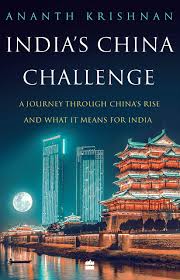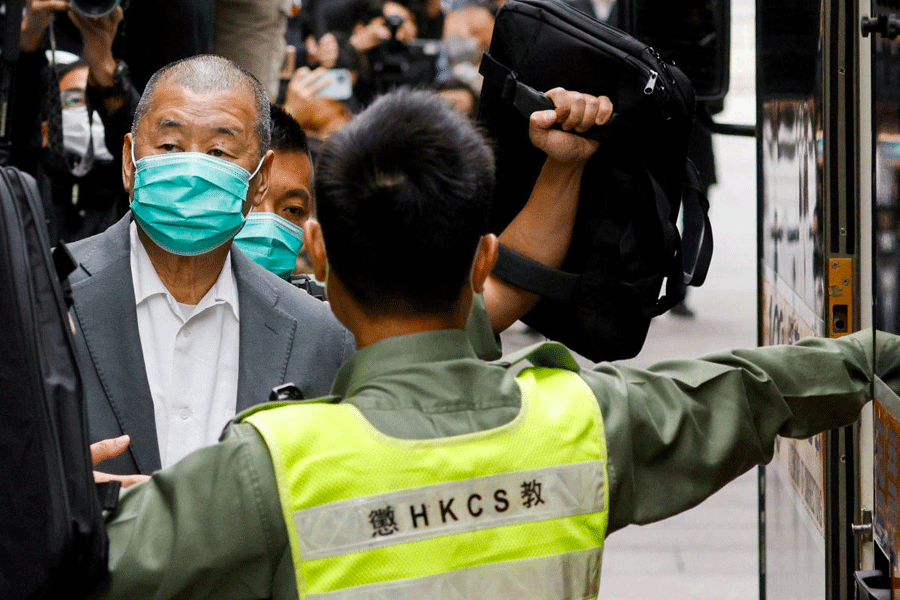Book: India’s China Challenge: A Journey Through China's Rise and What it Means for India
Author: Ananth Krishnan,
Publisher: HarperCollins
Price: Rs 599
If China and India were to form an alliance, their populations would account for around half the world, and they would dominate the world’s most economically significant and militarily precarious region. Yet, the relationship between the two countries remains eternally guarded. The trade relationship, mostly in China’s favour, is worth over US $90 billion, which is small in global terms. Looming much larger is the long history of animosity between the two sides. The India-China border war of 1962 is still a source of trauma in New Delhi’s security community, and the clashes between soldiers in Ladakh earlier last summer revived memories of how a small incident could lead to a major regional conflict.
If there was ever a time that a clear and compelling assessment of India’s relationship with its neighbour was needed, it is now. Fortunately, Ananth Krishnan’s book provides a powerful guide to today’s China and how India should engage with it. Krishnan is the Beijing correspondent for The Hindu, and much of the book is based on his experiences of living and working in China.
Krishnan’s book is really two separate studies. One is an explanation of China under the rule of Xi Jinping. It covers material that those familiar with China will tend to know already. But for general readers, it’s a fine introduction. Krishnan’s account of the Chinese Communist Party explains that “the Party is everywhere” and shows that the organization is less akin to a political party in a democracy and more like a framework — sometimes coercive, sometimes enabling — that runs throughout the administration of the entire country.
The other section is a detailed study of the relationship between India and China. This part will be valuable for readers well beyond India; indeed, it should be read widely in Washington, London and Berlin. Krishnan looks in detail at the changing patterns of trade, showing how new links have opened up. Some images are startling, such as those of the way Indian merchants visit Yiwu, a city in China’s eastern Zhejiang province, to source religious items and artworks, including paintings of the baby Krishna, manufactured, Krishnan says, not in Coimbatore but in the Chinese town of Cangnan, which can produce them more cheaply than it is the case in India. Yet a key point is that China is not, as it is sometimes characterized, simply a source of cheap labour. Rather, it has become a go-to spot for skilled labour, particularly as the government invests in poverty reduction and training skills.

India’s China Challenge: A Journey Through China's Rise and What it Means for India by Ananth Krishnan, HarperCollins, Rs 599 Amazon
Krishnan also overturns some common conceptions about politics in the two countries. It’s true that mayors in Indian cities are democratically elected, but they often have less power over decision-making or budgets than their Chinese counterparts who may put in extra effort for an impressive performance because they (mostly men) know that their career up the Party ladder may depend on it. Some of the most engaging parts of the book are discussions with Chinese fans about different parts of Indian culture. These include a translator of Tagore’s poetry into Chinese, members of an Aamir Khan fan club, and a young woman determined to bring cricket to China.
Krishnan is clear-eyed about the system’s faults as well; one of the ways that China constrains its own talent, as his interviews show, is by censoring free speech for academics.
He also deals skilfully with the festering sore between the two countries, the suspicion that comes from the confrontation in the Himalayas, Indian concern about Chinese expansion in South Asia, and the memory of 1962. He notes that India cannot acquiesce to formal participation in the Belt and Road Initiative while the ‘New Silk Road’ is designated to run through Kashmir. But he does point out that China is ‘in another league’ in the power dynamics in the region. His argument is that both sides need to be serious about a settlement and prepare their own people for the difficult compromises that might entail. It’s hard to argue with Krishnan’s position, but it would perhaps be even harder to implement it in the two countries where nationalistic feelings are running ever higher.
India needs to work out what sort of relationship it really wants with China, and greater knowledge of China has to be part of that search. Relatively few Indians study Mandarin or research aspects of China outside security issues. This deficit will become more problematic as new, bigger questions emerge. Should India deepen its relationship with Japan, Australia and the US (‘the Quad’) to push back against China’s power in the Indian and Pacific Oceans? Can India create a technology partnership with China, taking advantage of India’s expertise in services, or are the security issues too great to permit that? One thing is sure: India urgently needs to know China better. This book is an excellent start.










